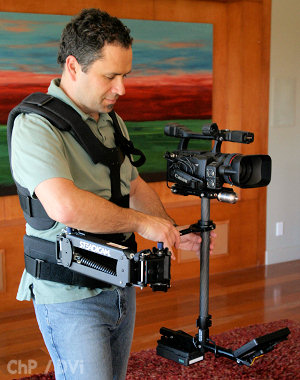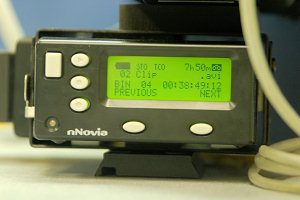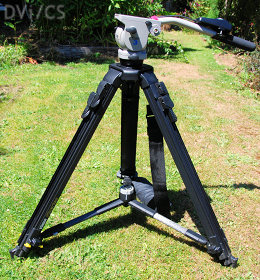
Review: Steadicam Pilot (pt. 1 of 3)
See the official Steadicam Pilot product page at http://www.tiffen.com/pilot.html When Garrett Brown was first developing the Brown Effect Stabilizer in the early 1970’s, the cameras he chose for his prototypes…

See the official Steadicam Pilot product page at http://www.tiffen.com/pilot.html When Garrett Brown was first developing the Brown Effect Stabilizer in the early 1970’s, the cameras he chose for his prototypes…

See www.steadicam.com/pilot.html Charles Papert flies the Steadicam Pilot in the Missionary Position with a Canon XH A1.When Garrett Brown was first developing the Brown Effect Stabilizer in the early 70’s,…
We have witnessed a revolution in digital cinematography over the past few years. Features once reserved for $100,000+ professional digital cameras have found their way into camcorders priced under $10,000.…

This review originally appears on Josh Chesarek’s web siteand can be discussed on our DV Info Net community message boards. For every hour of tape you use you have to…

Strange things, video tripods: after the cameras themselves, they are quite possibly the most owned piece of video equipment on the planet. They’re indispensable for secure, stable and portable camera support but are possibly the least understood, least written about and badly described pieces of kit you’ll ever own…
The FiberTecs look like no other tripod I’ve ever seen. Out of the box they seem tiny, surely not capable of getting to that published maximum height of 61.5 inches/ 156 cm? Then you grab the tripod by the attached carry strap and lift – they aren’t lightweights, those 7.3 pounds/ 3.3 kilos are there all right. Pressing the yellow leg latch on the bottom of one of the first main leg sections allows the legs to be spread and a decent look to be had.
My immediate impression was of utter solidity. At the tripods lowest height setting, those nested 3-section legs offer a solid black girder appearance, with not a chink of light visible through them anywhere. When viewed standing back from the tripod, the “front on” leg appears to be massive widthways (as, indeed, it is), the other two legs, slightly more side on, offering a much slimmer profile.
My first impression having unpacked the Spread – Loc was that it was manufactured out of Depleted Uranium – it’s so darn heavy! At two pounds (just shy of a full kilo) it seems totally Over the Top for just a simple spreader. There’s no disputing it is beautifully crafted however, and seems to be primarily composed of various types of carbon fibre..
The rest of the system is pretty manageable on its own, and quite easy to sling over one shoulder, the camera acting as a counterbalance on the other. The only issue with the bare tripod/ head being slung “head down” is to beware when walking in public where young children are around. That video head is pretty substantial and just at the right height to kybosh a 5 year old in no uncertain fashion should there be a collision.
My initial reservations with regard to the Spread – Loc spreader have been allayed. I still haven’t managed to figure out the engineering concepts behind their working, but work they do. Whether I’ll ever figure what gives with that lock mechanism I don’t know, but have long ceased worrying about it.
The supplied lens focus gears ship with only one size mounting screw, which means if your lens is not the proper diameter you will need to either purchase new screws or possibly cut the screws to the proper size. Fitting the lens gears requires measuring the inner screw area of each screw during the tightening process to make sure the lens is centered within the gear.